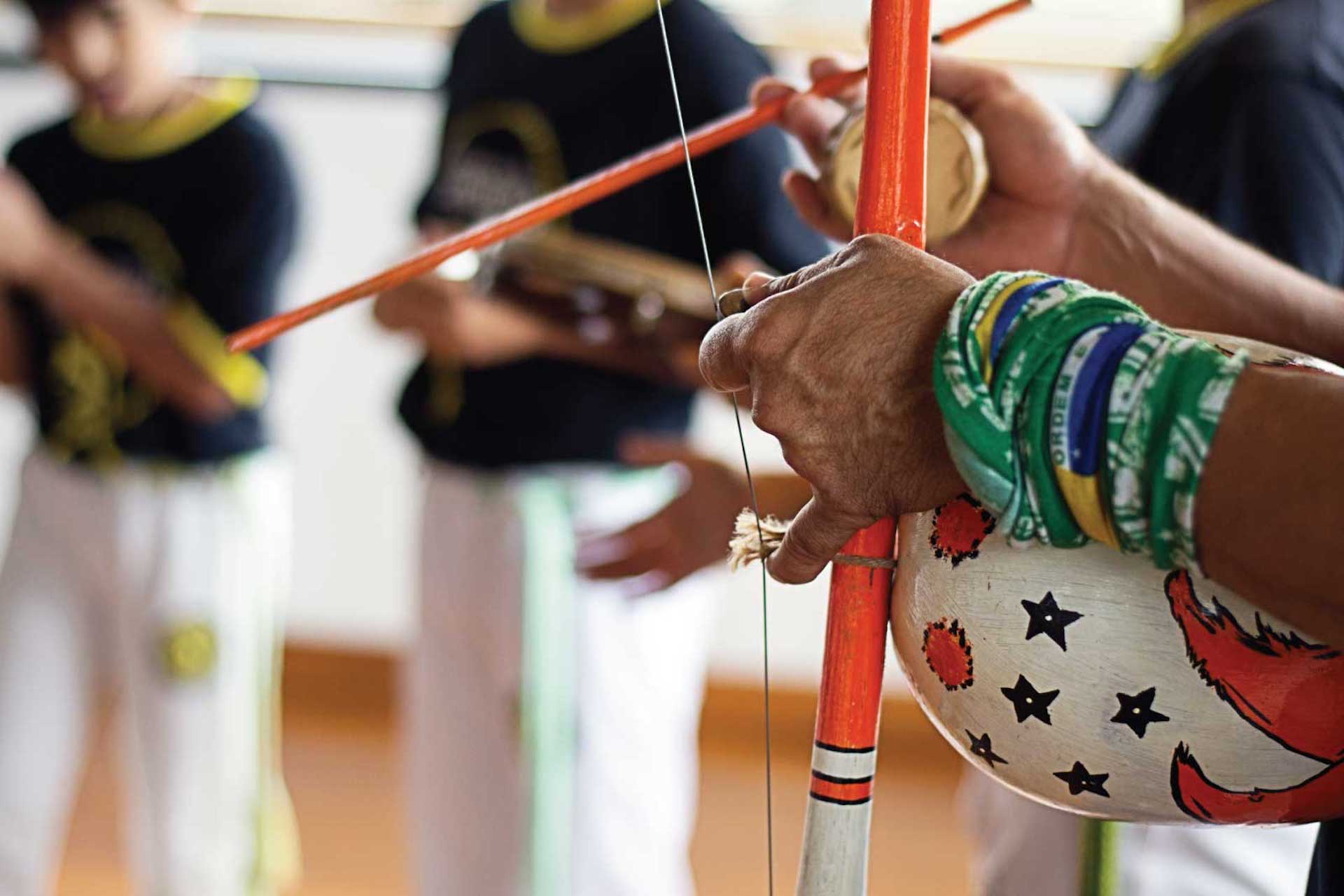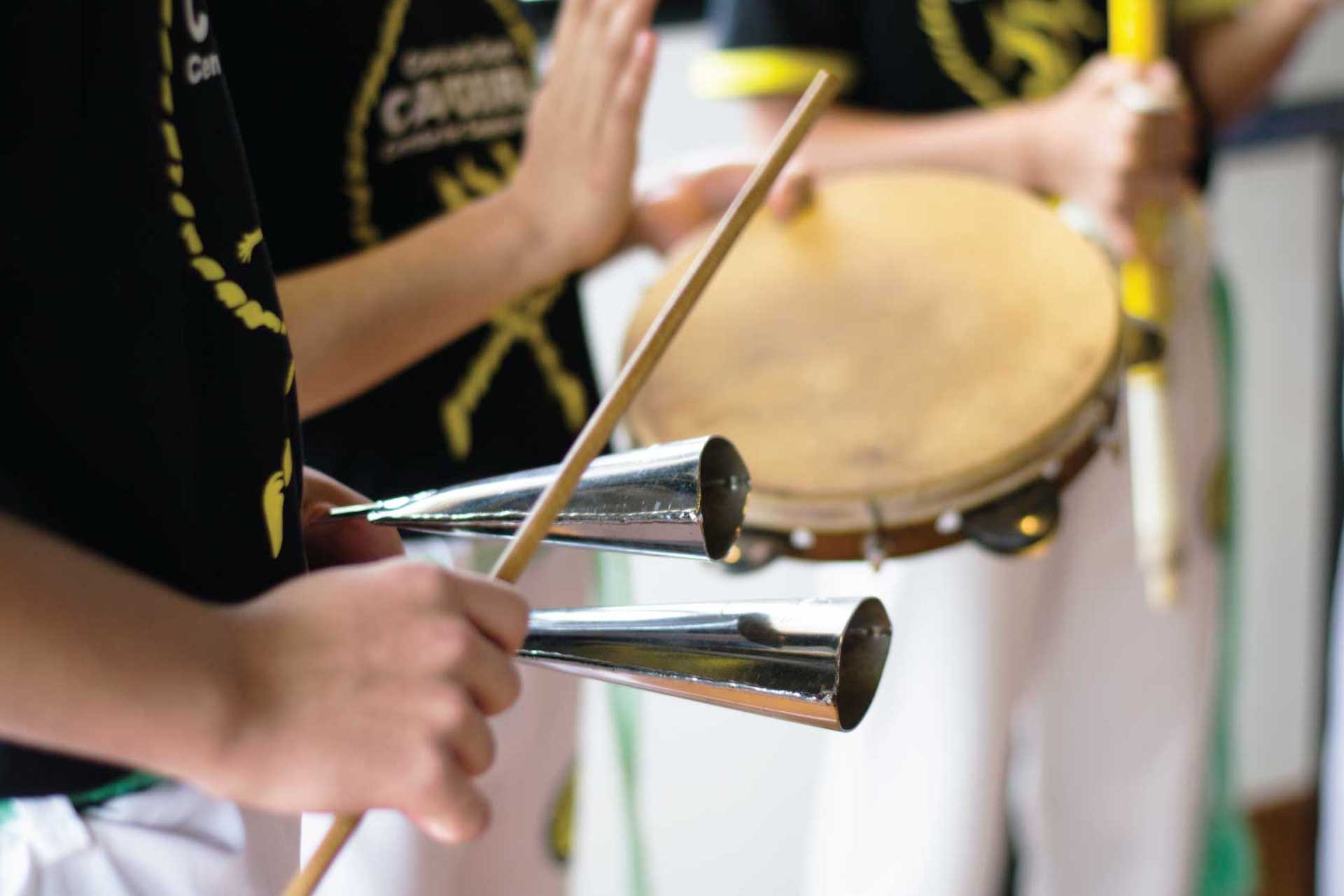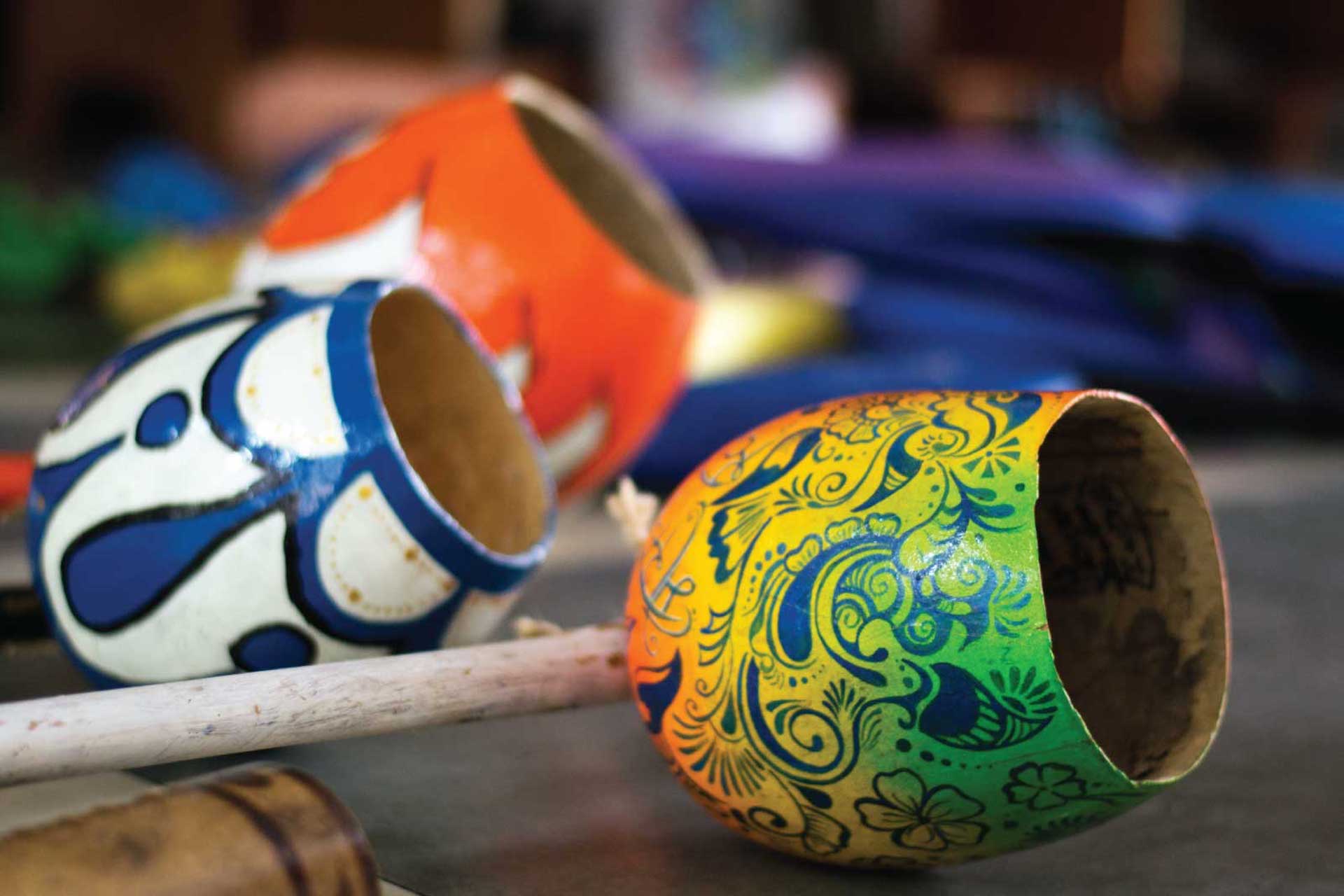Capoeira without music is life air without oxygen. And it is the instruments that bring soul and energy to the capoeira game. There are five main instruments used in capoeira: berimbau, pandeiro, atabaque, agogô, and reco-reco. Rodas of capoeira angola typically use three berimbaus (a gunga, médio, and viola), one or two pandeiros, an atabaque, agogô, and reco-reco.
The types of instruments used to form the bateria (orchestra) depend on the style of capoeira. Rodas of capoeira Angola typically use three berimbaus (a gunga, médio, and viola), one or two pandeiros, an atabaque, agogô, and reco-reco. Rodas of Mestre Bimba's traditional capoeira Regional use one berimbau and two pandeiros. Rodas of capoeira Contemporânea are in between, typically using more instruments than Regional, but fewer than capoeira Angola.
Berimbau
The berimbau is a musical bow of African origin. It consists of an arc of biriba wood about 1.6 meters long and 2.5 centimeters thick, called the verga. The lower end of the verga is carved into a peg to attach the wire (arame), which is then stretched tight over the top end of the verga, bending it. The arame is a steel wire taken from the inside of a car tire; before there were tires, animal entrails or vegetable fibers were used to string the berimbau. The resonator attached towards the bottom of the verga is called the cabaça. It is a dried, hollowed-out gourd.
The instrument is held in the left hand with the opening of the cabaça facing the body. It is balanced on the pinky finger, and an old Brazilian coin (dobrão) or stone is held between the left thumb and forefinger; this serves to press against the arame and alter the pitch. The right hand holds the caxixi, a rattle woven of wicker with seeds, seashells, or pebbles inside, as well as the baqueta, a thin wooden stick used to strike the arame.
Berimbaus come in three sizes. The one with the largest cabaça and most flexible verga is called the gunga. It has the deepest sound, and in the roda it is responsible for keeping the basic rhythm. The berimbau médio has a medium-sized cabaça. In the roda, it plays the inverse of the gunga’s rhythm. The viola or violinha has the smallest cabaça, the stiffest verga, and the highest, sharpest sound. Its role is to improvise, embellish, and play variations on the rhythm.
There are many legends surrounding the berimbau; the most interesting tells about a beautiful young girl who was attacked and killed by a villain while drinking water from a stream. Her enchanted body transformed into a berimbau: her body became the arc of wood, her hair became the arame, her cupped hands became the cabaça, and her cries of sadness and pain became the instrument’s melancholy sound.
Pandeiro
The pandeiro, originally from East Africa, is a type of tambourine. The instrument’s head may be made of leather, snakeskin, or plastic. Capoeira, samba, reggae, and many other forms of Brazilian music utilize this instrument.
Atabaque
The atabaque is a tall hand drum. The body is typically made of jacaranda wood and the head, fastened to the body by ropes, of calfskin. The atabaque maintains the beat and secures the pace of the rhythm being played in the roda. There are three sizes of this instrument: rum (the tallest with the lowest sound), rum-pi (medium height and medium sound) and lê (shortest with the highest sound). Multiple atabaques are used in maculelê and in candomblé ceremonies, but the capoeira roda uses only one.
Agogô
The agogô is an African musical instrument whose name means “bell.” It consists of two hollow iron cones that are struck with a stick. The bells are typically tuned a fourth or a fifth apart. The agogô is also used in candomblé.
Reco-reco
The reco-reco is a section of bamboo with notches cut into the side; it is played by rubbing a stick back and forth over the grooves. The reco-reco is believed to originate from the indigenous peoples of Brazil. It is also used in samba and reggae.




